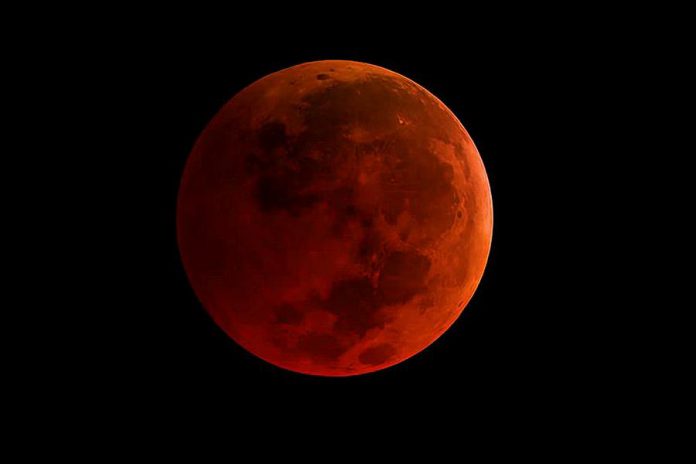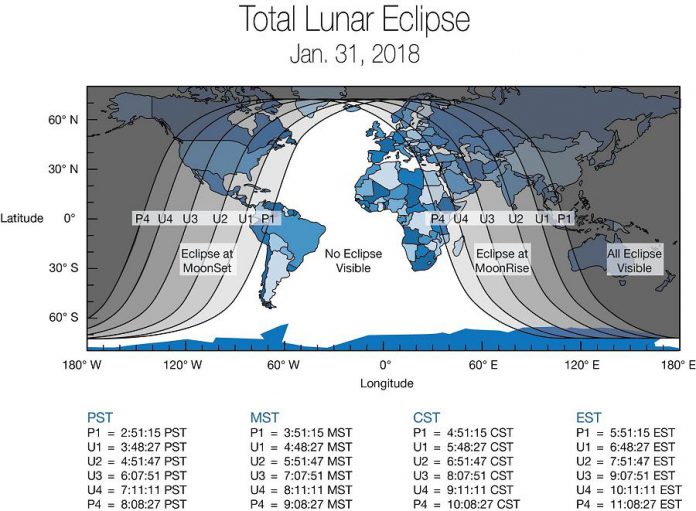
On Wednesday, January 31st, there will be a rare event that NASA is calling the “Super Blood Blue Moon”. While it sounds like it could be band name, it’s actually a confluence of three things: a supermoon, a blue moon, and a blood moon (a total lunar eclipse).
A “supermoon” is the popular term for a perigee full moon — a full moon that happens when the moon is at its perigee (closest to the earth in its monthly orbit). A supermoon can be 14 per cent bigger and 30 per cent brighter than a regular full moon. Supermoons by themselves aren’t that rare — about a quarter of all full moons are supermoons.
A “blue moon” is a second full moon that occurs in a single month. Although a blue moon is simply an artifact of our calendar rather than an astronomical event, they only occur once every two-and-a-half years — the source of the saying “once in a blue moon” to describe an uncommon event.
Finally, a “blood moon” is another popular term to describe a total lunar eclipse, when the earth comes between the sun and the moon and the earth’s shadow completely obscures the moon.
It’s called a blood moon because the moon will appear red — a result of sunlight refracted through the earth’s shadow, which scatters blue light and leaves only red (similar to what happens during a sunrise or sunset). Lunar eclipses happen at least twice a year, but total lunar eclipses only happen every two to three years.
VIDEO: Jan. 31, 2018 Super Blue Blood Moon and Lunar Eclipse
So how rare is a super blood blue moon? The last time this combination happened globally was in 1982, but it’s the first time it’s been visible in North America since 1866.
But if you remove the blue moon element, which is just an effect of how we’ve structured our calendar, “Super Blood Moons” aren’t all that rare. They happen every few years, and we’ll see another one on January 21st, 2019, which will be visible over all of North and South America.
In Canada, the best location to view the January 31st super blood blue moon will be the west coast.
Here in the Kawarthas, we’ll only see a partial lunar eclipse. The earth’s shadow will start falling on the moon at 5:51 a.m. and the moon will only start to appear red at 6:48 a.m., when the moon is close to the horizon.
By 7:28 a.m., the earth’s shadow will obscure just over half of the moon, and it will appear at its reddest — this is the best time to view the eclipse. By 7:31 a.m., the moon will have set under the horizon and will no longer be visible.
Because the partial lunar eclipse will occur when the moon is very close to the horizon, if you want to see it you’ll need to find high ground or find an area with an unobstructed view of the west-northwest horizon.
Of course, seeing the moon at all depends on the weather. The forecast for January 31st as of the date of this story is cloudy with flurries, although that may change.
However, NASA will be offering a live feed of the total solar eclipse beginning at 5:30 a.m. on Wednesday, January 31st. You can watch it on NASA TV or follow @NASAMoon on Twitter.



























